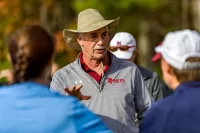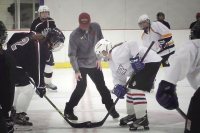
On a blustery, bluebird Tuesday afternoon on the Androscoggin River, the men’s and women’s Bates rowing teams took part in a ritual with a very practical outcome: getting their docks into the water so they can start rowing on the river, getting their earliest-ever start to river rowing following a warm and rainy winter.
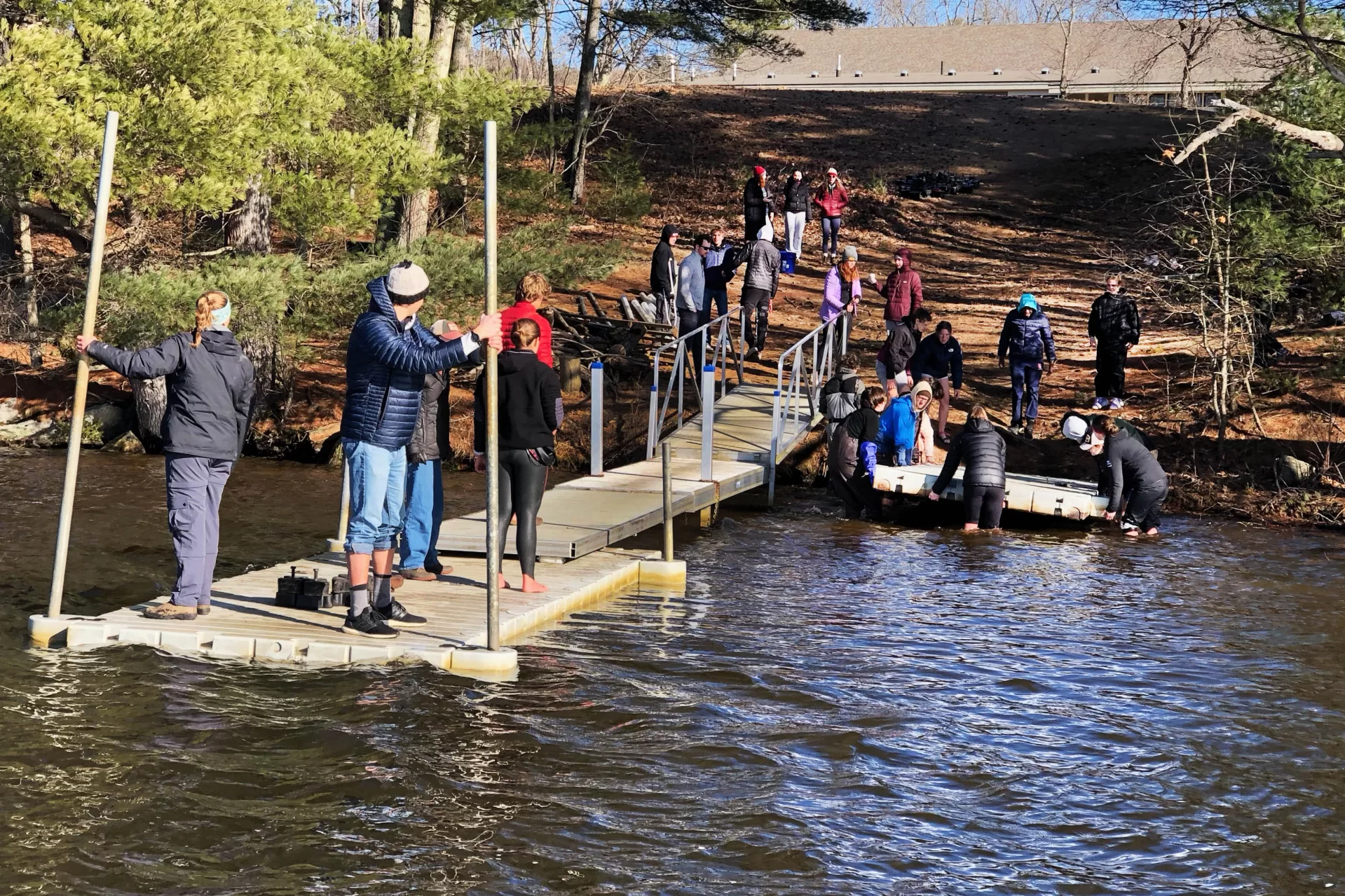
The following morning, a few of the Bates rowers were having breakfast in Commons, and we asked them how the dock installation went.
“Cold,” said Daniel Rodriguez ’24 of Longboat Key, Fla.
“Cold,” said Andrew Frey ‘24 of Berkeley, Calif.
“Cold,” said Luke Desmaison ’26 of New York City.
To be sure: rowers know the power of being in unison.

But the Bates rowers weren’t complaining; quickly, they pivoted to how dock day is part of the process of getting better and stronger, whether enduring agony of the erg machine during winter workouts or working together, as a team, to walk dock sections into very cold river waters whose source is the still-snowy White Mountains to the northwest.
“When you’re on the erg, when you’re indoors, you’re working so hard for the expectation that you will get back on the water,” said Rodriguez. “There’s a lot of built up emotion and excitement during the winter because we’re not doing what we love best, which is rowing on the water.”
The winter weeks pass, and then — finally — the river is free of ice and dock day arrives. “Everyone’s excited,” Rodriguez said. “You’re putting in the docks, getting in the water, and you realize how cold it is. But everyone’s under a consensus: ‘Oh my God, we get to finally go back out on the water.’”
And onto the water earlier than ever before. “Eighteen days earlier than ever,” says head coach Peter Steenstra, who leads a highly successful men’s and women’s rowing program, the women being perennial NCAA regatta championship contenders and the men coming off their best-ever showing at the Intercollegiate Rowing Association regatta, placing third.
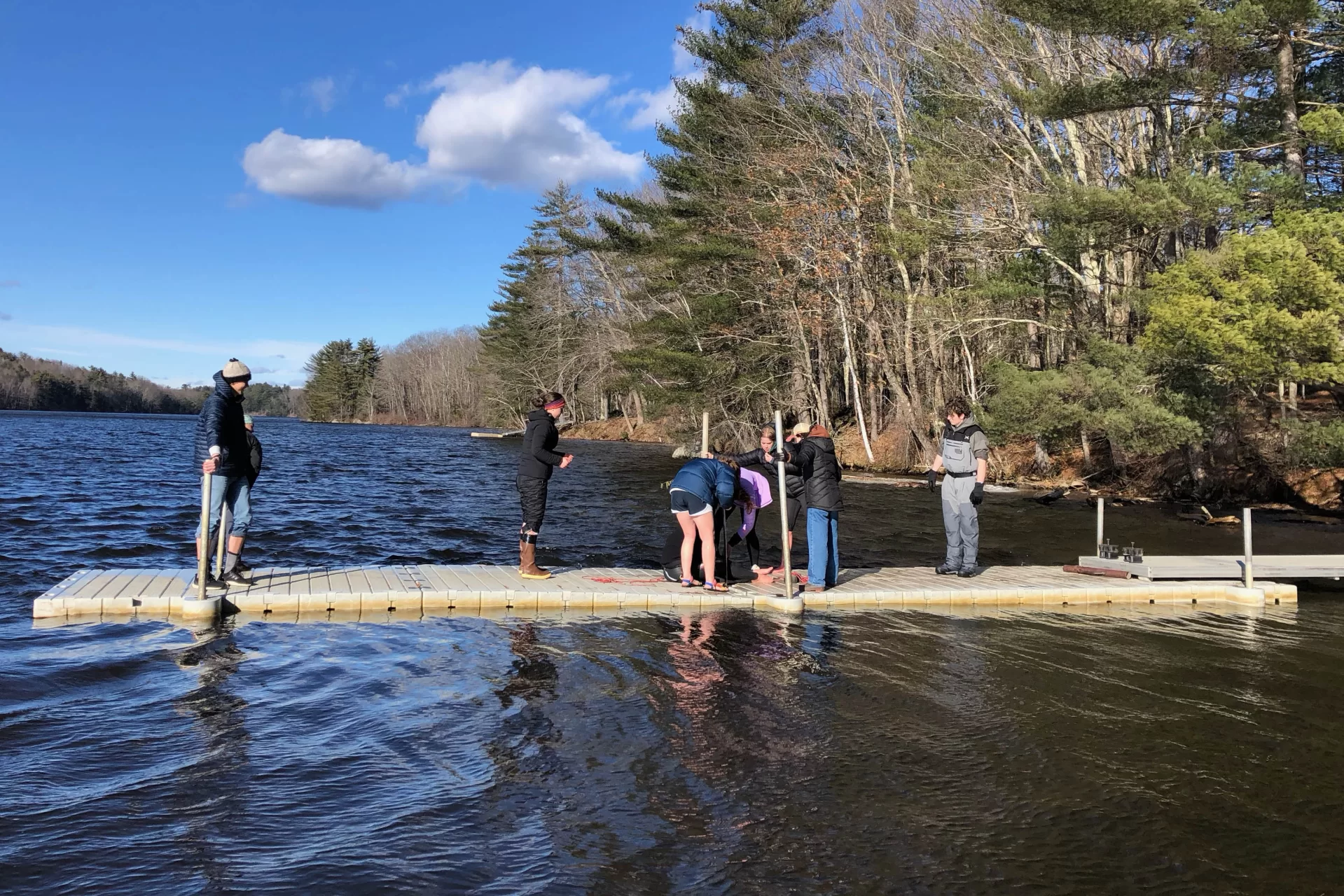
Indeed, the markers of Maine’s mild and rainy winter are everywhere, whether the March 5 ice-out at Lake Andrews (perhaps the earliest ever) or the rowing team getting on the river earlier than anytime in Steenstra’s illustrious time at Bates, and likely earliest ever since the program was founded in the 1990s.
Had this been a typical Maine winter, the river might either still be frozen or, if the team tried to row, their boats would be bashed and tossed like Ernst Shackleton’s Endurance by ice flows rampaging down river.
Even with the mild weather, the team did their part to hasten the arrival of dock day. Last weekend, some of the rowers, including Riley Young ‘24 of Santa Monica, Calif., headed to the boathouse to clean the boats in preparation for dock day.
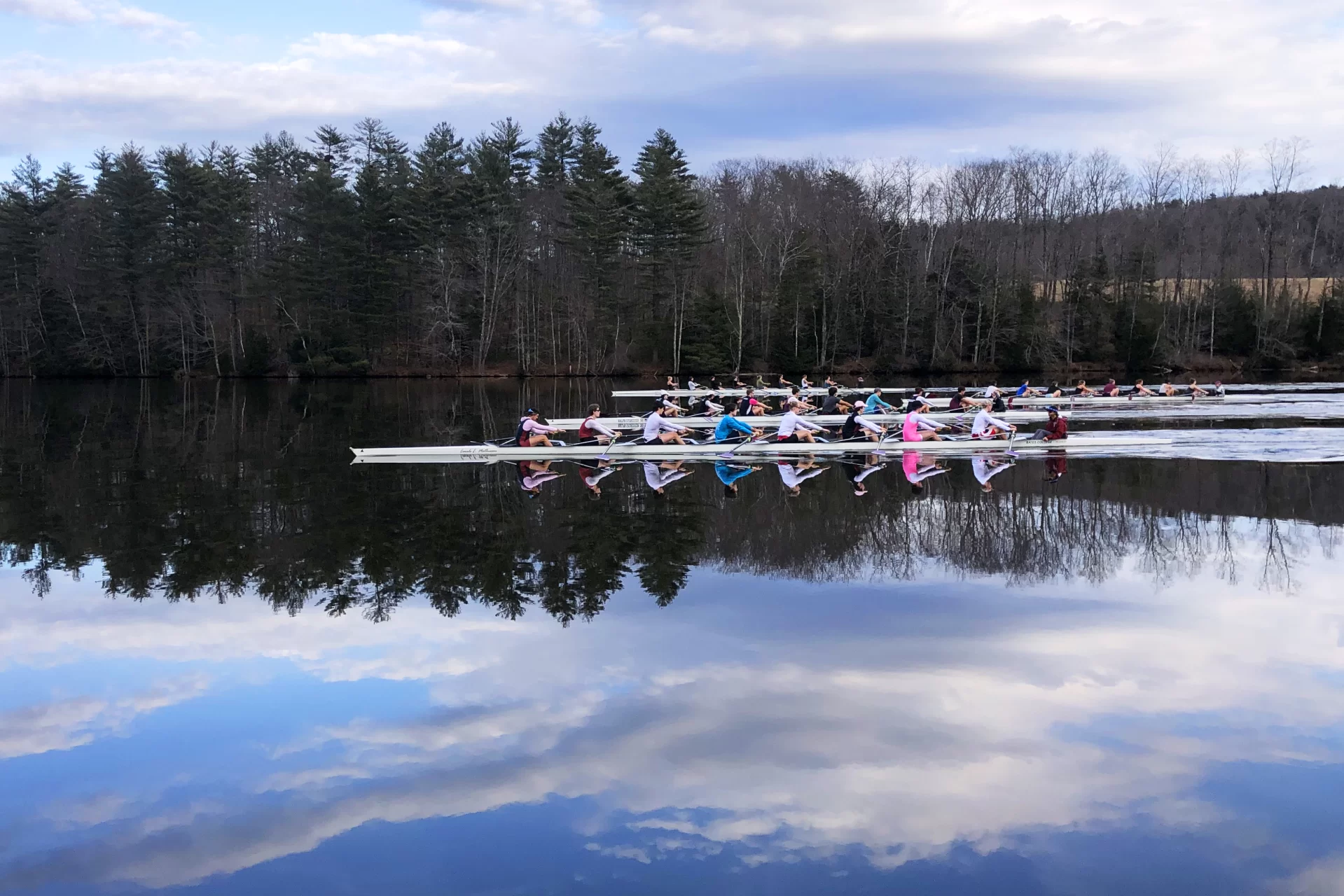
To their dismay, the water in front of their dock site was still iced over. “Completely solid ice,” said Young. “So we had [rowers] go out there with sledgehammers to break it up. And after the heavy rain last weekend, it all cleared up. So we got really lucky with timing.”
While the dock ritual is not unique to Bates rowing, “it’s less and less common these days,” said Steenstra.
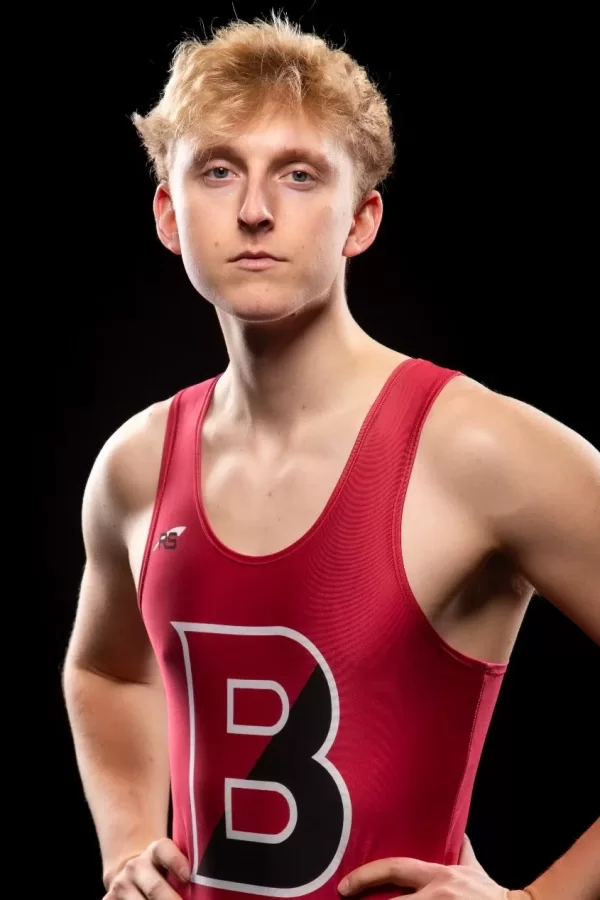
“But it’s definitely a right of passage here at Bates. There’s value in doing this kind of work for yourself, just as there’s value in doing this kind of work with your teammates and friends. They’re less likely to take the equipment for granted, and more likely to ‘earn’ rather than ‘expect’ — it’s how they take ownership of the season ahead of them.”
That’s the essence of Bates rowing, says Frey. “When I think of Bates rowing, I think of three years of hard work and watching my friends grow as people by doing stuff that just kind of sucks,” like those erg workouts, “but will help us in the long run. Putting in the docks is just another point on that graph: a thing we do together that helps us as a team.”
Each fall, the Bates men and women haul the docks from the water and stack the sections on shore near the Traquina Boathouse, about 250 feet from the water. Each spring, they haul them back to the river.
The dock comprises three parts: a walkway from the shore to the water, a fixed section anchored with pilings, and then an extensive set of floating sections anchored with either pilings or concrete blocks that need to be waded out into the cold water some distance from shore. (This year, a few of the waders brought wet suits and gators to stave off the cold). Each dock section is connected to the other with “dock bones.”

Rowing boats being quite long — up to 60 feet — the docking is extensive, more than 200 feet in total.
“It’s huge. Massive,” says Emily Everett ‘24 of Fair Haven, N.J., dubbed “the dockmaster” by her teammates.
The walkway goes first, and it has to be perpendicular to the shore. “If the walkway doesn’t go in exactly right or straight, the entire dock will be offline. And then it gets too close to the shore. And that’s not good for the boats because it’s too shallow, and then that messes with the coaches’ launches if it’s too shallow.”
The entire process takes nearly four hours, with a staggered arrival of rowers (depending on their class schedules) arriving to do their dock stint. “It can feel like it’s taking forever, but it is so worth it,” said Everett.
In either direction — water to storage, storage to water — carrying the heavy dock sections is tricky due to a steep, uneven slope from shore to river. “The tree roots are devious,” says Rodriguez.

As a coxswain, Oli Seline ‘24 of Delaware, Ohio, directs, motivates, and steers rowers during races. On land, coxswains guide rowers as they carry boats to the docks for launching. “And like carrying the boat, you have to organize everyone to carry all the dock pieces down the hill — more than a dozen sections,” Seline said.
If there were a scatter chart that plotted rowing excellence and the latitude of each college, Bates would be an outlier among Northeast programs, and the rowers embrace this.
“We’re pretty far north and don’t get to be on the water as long as anybody else,” says Desmaison. And more southern programs don’t need to haul in docks. “The docks are just another way, like the erg room, that we get to build more of a special relationship before we get on the water and are in boats again together.
“Putting in the docks is kind of that transition moment — everybody’s there and willing to work together so that we can get closer to the common goal.”
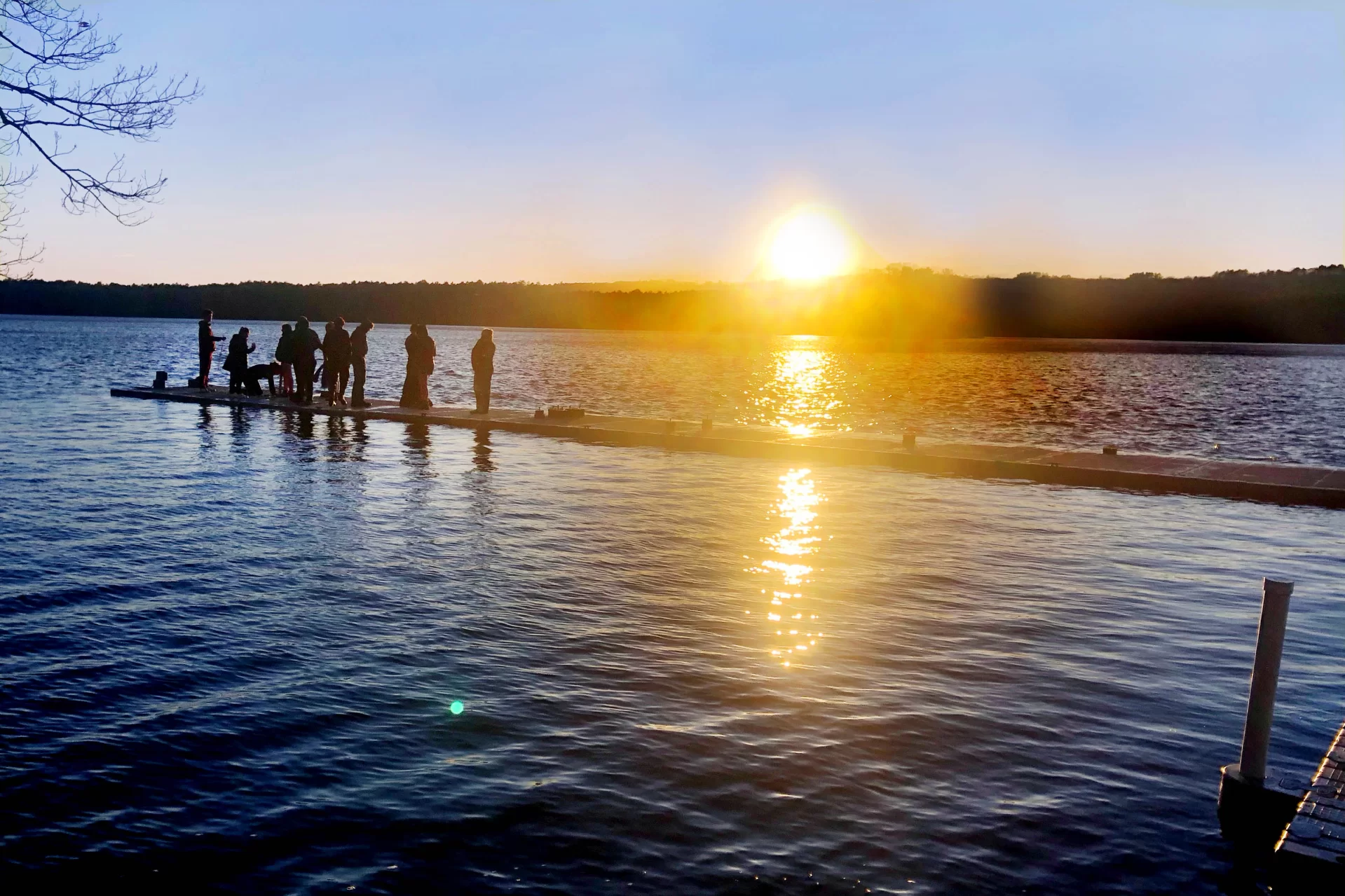
With sunlight fading on dock day, March 12, Steenstra had the honor of dropping the last concrete block and chain into the flowing Androscoggin, anchoring the last floating section, completing the ritual and kicking off the next part of their season.
“Right at sunset,” he said.
